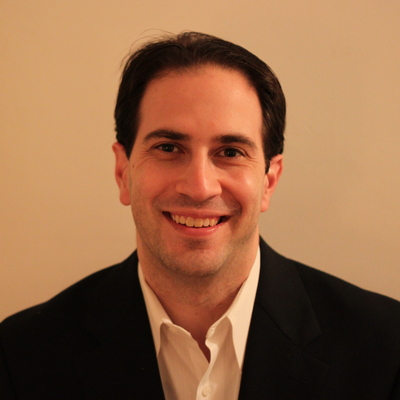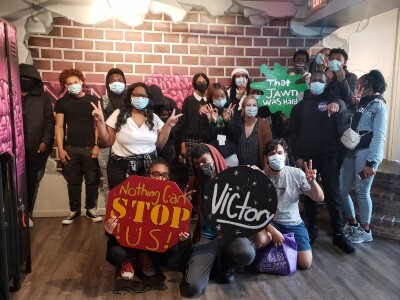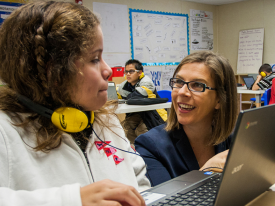Unlearning White Supremacy Culture in Education
Topics

Together, educators are doing the reimagining and reinvention work necessary to make true educational equity possible. Student-centered learning advances equity when it values social and emotional growth alongside academic achievement, takes a cultural lens on strengths and competencies, and equips students with the power and skills to address injustice in their schools and communities.
Changing organizational culture away from a toxic and detrimental supremacy culture requires unlearning many of the characteristics that help individuals rise to a position of leadership.
The past few years have seen a lot of discussion of what Tema Okun and Kenneth Jones call “white supremacy culture.” In an article first published in 2000, they argued that white supremacy culture was comprised of a series of characteristics—individualism, perfectionism, fear of open conflict, denial and defensiveness, either/or thinking, emphasis on quantification, and many more—that they argued collectively comprised “white supremacy culture.”
I have found this framing both challenging and compelling. Challenging because “white supremacy” has historically had much more directly racist connotations—ranging from the Ku Klux Klan to biological claims of racial inferiority—and I worry that associating the term with traits like perfectionism and quantification will dull the force of what we have previously considered “white supremacist.” But compelling because there are a cluster of characteristics that are frequently embraced by people in power, and used to perpetuate that power, and this list captures many of those elements.
The problem is that what can help the individual get ahead can be extremely harmful to the collective.
In a recent article, Daniel Lim articulates that as an Asian-American, many of the characteristics of white supremacy culture described much of his own Chinese experience. He argued that the list described supremacy culture, period, and was equally characteristic of what he called Chinese supremacy culture. I have also had a number of African American and Latinx mid-career students who upon seeing this list have felt a shock of recognition, as it was embracing these traits that have helped them climb the ladder of the school system. As a black woman from Mississippi exclaimed, “That’s not white supremacy culture; that’s just how things work!”
As my students and I explored these ideas further, it seemed that there was a dilemma between the individual and the collective. For the individual, embracing these tenets did help them get ahead—many of these students were sitting in a Harvard graduate program precisely because they had been perfectionists, avoided conflict, and succeeded by quantitative metrics (their own GRE scores as well as the test scores of the schools that they had led). Ironically, this was even more true for folks who differed from the white heterosexual patriarchal norms—people of color, women, and LBGTQ students—who, as they assumed positions of leadership, were expected to conform to the dominant norms, many of which are captured by the elements on the white supremacy culture list.
The problem is that what can help the individual get ahead can be extremely harmful to the collective. Particularly in positions of leadership, imposing this kind of culture can be highly detrimental to both the organization and the people who work within it. I’ve seen many organizations where the leader, in the name of high standards, declares that everything has to be perfect, where any information that might puncture that narrative is suppressed, and where everyone lives in fear of speaking the truth or making a mistake. These are toxic places to work, and, of course, they do not actually achieve the standards they seek. Without the ability to admit mistakes, the organizations learn very slowly if at all, and, people flee them in large numbers because working in such places can be detrimental to one’s health and well-being.
There is a “Peter principle” at work here. Namely that some of the characteristics that help one rise to a position of leadership are not the same characteristics that help one be a good leader. We can hope that this is just a historically contingent observation—that as we build more and more organizations that are founded on different and anti-supremacist principles, the people who rise in those organizations will be those who have exhibited a different set of values.
So what do organizations that are founded on an opposing set of principles look like? There are many of them, in both the private and public sector, and they exhibit a different set of characteristics. They are non-hierarchical places, places where ideas can emerge from anywhere in the organization, and where a much wider range of contributors and types of contributions are valued. They are relational places, where people prize spending time with one another, and where people’s personal and professional selves can be integrated and welcomed. They are places which learn by doing, where it is acknowledged that being on the cutting edge will inevitably mean trying things that won’t work. All of those qualities help these places become learning organizations, as the absence of fear and hierarchy and the presence of relationships enables information to flow and individuals and organizations to learn.
Running this kind of organization requires some significant unlearning on the part of leaders raised in supremacy culture. For a certain kind of person, it can be difficult to run a meeting without perfectly manicured PowerPoint slides and a moment-by-moment agenda, a meeting where discussions are free-flowing and you don’t know where they will land. Particularly for leaders of color, women, and LBGTQ leaders, there is a perceived risk that doing so compromises one’s earned authority, and, at worst, can make it feel like you are not doing the job of leadership. Uncertainty can be scary. But uncertainty is necessary, and will be welcomed, when bringing more people from your organization into the decision-making process. As Michael Fullan wisely says, the job of the leader is to be right at the end of the meeting.
If you want to build a good organization in the long run, you need strong relationships, places for people to breathe, and a culture that makes people want to stay.
Making these shifts is also critical for sustainability. In the short run, it can sometimes “work” to be insistent on outcomes, transactional in relationships, and pushing people to improve quantitative metrics. But this is fool’s gold; it won’t hold, and it’s not sustainable. If you want to build a good organization in the long run, you need strong relationships, places for people to breathe, and a culture that makes people want to stay. We need to escape the scarcity mindset that is so connected to supremacy culture—it is possible to create places that are good for both adults and children, where adults live healthy and balanced lives and children succeed. In fact, if the goal is to help develop young people into healthy and thriving human beings, there is no way other than building an environment where the same is true for adults.
Leaders who are working to develop such organizations would be wise to draw on the traditions of counter-institutions that already embody many of these principles. Two groups serve as examples. The first are the folks who have long ago identified these problems and created more inclusive organizational practices, including Appreciative Inquiry, World Café, Open Space, and many other tools and practices that help people collaborate in non-hierarchical ways to harvest the wisdom of the group and move forward together. A second group are folks who have developed principles and practices that either preceded or actively seek to resist supremacy culture. For instance, many Indigenous communities have long centered stewardship, intergenerational learning, and long-term thriving, offering a counterpoint to many of the values of supremacy culture. More recent work on healing-centered engagement and restorative justice similarly seeks to move away from the blame game, build trust, and put people into deeper relationship with one another. These are just examples—if we center a more humane set of values, there is no shortage of counter practices and models to draw upon.
At the same time, any such effort will be challenging given that organizations, including schools, sit in a broader ecosystem that is suffused with supremacy culture values. In the private sector, firms which want to pay their workers more, give them greater training, or treat them with more respect, frequently have to defend themselves from industry analysts or shareholders who question their strategies, even though there is ample evidence that such firms benefit in the long run from the increased retention and greater commitment of their employees. In the school sector, the equivalent is the focus on immediate quantitative metrics and the need to show results tomorrow.
The key here is to help build a broader narrative with the school board and the public about what schools are for and what kinds of qualities young people will need to succeed in our world. With that as a foundation, the challenge for the field is to develop a range of evidence—including student work and exhibitions, climate surveys of students, parents, faculty and staff, street data on students’ experiences, retention and morale of faculty, measures of belongingness and inclusivity, and more—that would enable an organization both to tell a broader story of its mission and values as well as help it think broadly about where it needs to improve.
The values of supremacy culture unfortunately continue to be the dominant values of our time. To progress in the world requires being conversant with them and sometimes even being able to traffic in supremacy culture. But if we are going to move forward into the world we aspire to, we are going to have to figure out how to transcend, and, eventually, dismantle them.
Image at top courtesy of Vista Unified School District.




